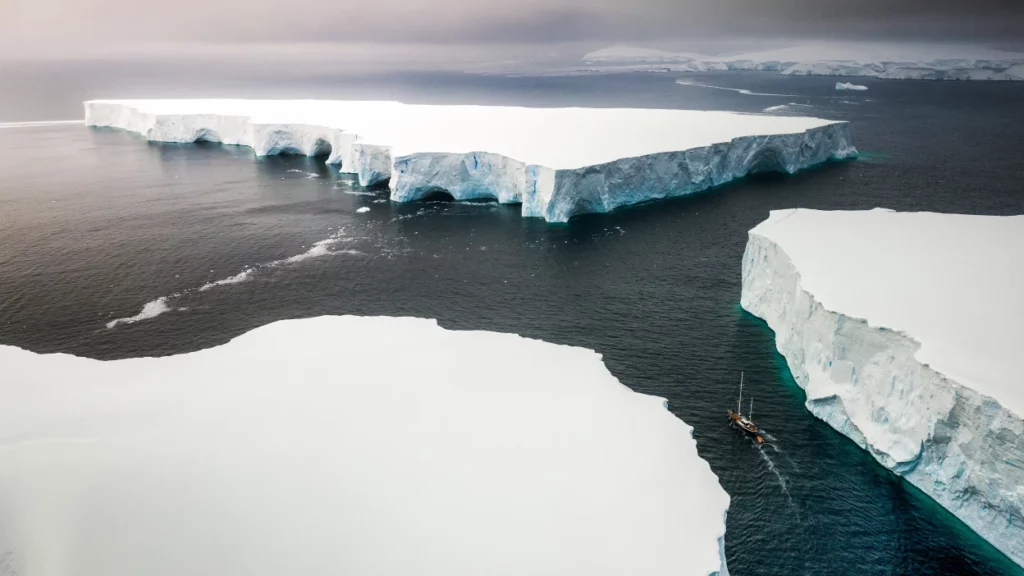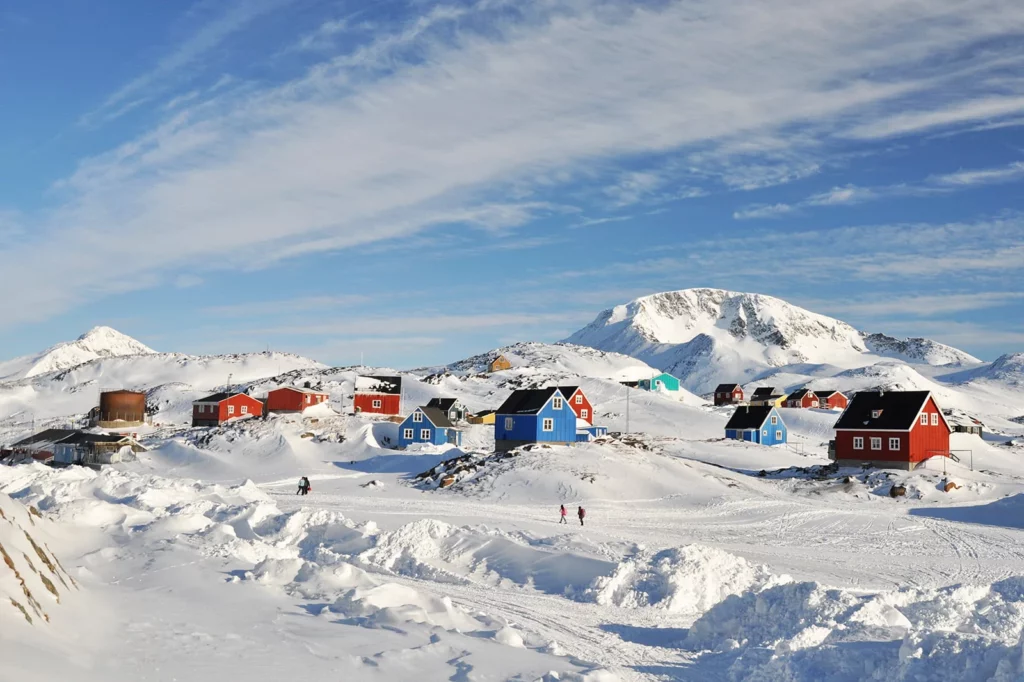Guess what? The Arctic ice is melting faster than scientists thought. As it has been for decades, except for all the times it didn’t melt when they said it would in 2000, 2004, 2013, 2014, 2015 etc. But now, yes folks, cue the corny circus music because “A new study finds that Arctic sea ice could disappear in the summers as early as the 2030s, a decade earlier than previously thought”. Settled science strikes again. And again, with Scientific Alarmism also recycling another E&E News story that “The Arctic Is Warming Four Times Faster Than the Rest of the Planet/ One study after another is coming to the same conclusion: the Arctic is heating up much faster than earlier research suggested”. Somebody chuck that settled science, willya? And that broken record.
The study is of course proving very trendy. Statista pounced on it, saying “Arctic Sea Ice Cover Hits Record Lows in 2023” which at least has the virtue of originality, at the cost of being untrue. It was a lot lower in the 1940s, for instance. (Though the claim is common; this spring NOAA said “the summer sea ice minimum extent has dropped to its smallest size in recorded history” which stretches back roughly 5,400 years, roughly 5,356 of which they ignore. Whereas even the IPCC, back in its innocent youth, showed in its first, 1990 report that Arctic sea ice was far lower in the early 1970s than it had been since, a chart that has since been tactfully omitted.) Then Statista blares:
“New research has found that the Arctic could be almost free of floating sea ice during summer by the 2030s - roughly a decade sooner than previously thought. Scientists say as much as 90 percent of the melting is the result of human-caused global warming and that even if extreme emission-reducing steps were taken, it is now too late to save the region’s summer ice.”
Too late? Apparently so. The Scientific American piece also says “The findings, published Tuesday in the scientific journal Nature Communications, warn that even aggressive global climate action may not be enough to stop it.” So will you at least shut up and let us be placidly doomed? Oh no. Heck no. Instead they continue banging that old drum:
“The research team, led by Yeon-Hee Kim of Pohang University of Science and Technology in South Korea, examined satellite observations of Arctic sea ice collected between 1979 and 2019. The Arctic is currently warming as much as four times faster than the global average, and sea ice has been rapidly declining for decades.”
And does this research team also know that 1979 is a very cherry-picked point since the ice had been accumulating for decades prior to that point, despite rising CO2 and the supposed man-made warming it wasn’t then bringing? And that rather than rapidly declining for decades, it stabilized in 2013 and started to rebound?
The corruption of science is rather unpleasantly on display on this issue, as on so many others related to climate. As Pierre Gosselin noted irritably in late May, a significant study out of Aarhus University found that summer sea ice did indeed disappear from the Arctic recently… in geological terms. As in early in the current Holocene interglacial, around 10,000 years ago. When CO2 was a lot lower than it is today, and temperatures were higher, despite recent attempts by the usual suspects over at the IPCC to send the “Holocene Climatic Optimum” or Holocene Thermal Maximum down the same memory hole as the Medieval Warm Period. Then it came back as the planet cooled, warmed, cooled, warmed, cooled and warmed, all without human or even natural CO2 driving the process.
What especially infuriated Gosselin is that after unveiling findings that completely contradict modern orthodoxy, the researchers then kowtowed to it, saying according to the press release that “Although this was caused by natural climate variability opposed to the human-induced warming, it still is a natural laboratory for studying the fate of this region in the immediate future.” Which would be true if, say, you used it to discredit the thesis that CO2 was driving temperature, or that if Arctic ice melted we’d hurtle past so many tipping points that we’d tip. Or simply to disprove the thesis that natural climate variability is unnatural.
Instead, Gosselin complained:
“Despite the undisputed powerful natural factors and cycles at play in the Arctic, some researchers take a more alarmist or even hysterical view of what the future holds. For example, warning that greenhouse gas emissions are heating up the planet, Christof Pearce said, citing dubious model results: ‘The study is a wake-up call, because we know that it will happen. This news is not making the situation more depressing, just more urgent. We have to act now so we can change it.’”
Prompting him to tweet in disgust, “In a nutshell they’re saying ‘We found all these powerful natural factors, but today we’re gonna ignore them and claim CO2 drives everything!’”
Well yes. It’s how climate science is done by those who want to keep getting grants. And speaking of models, the study hyped by Scientific Rubbish discarded the real Arctic, the cold place where paddleboarders highlighting climate change have to go home because it’s all frozen. Instead “The researchers then compared these observations with computer model simulations of Arctic sea ice declines over the same period.”
The models of course know all and see all:
“The use of simulations allowed the scientists to investigate the influences of individual factors including greenhouse gas emissions, other forms of air pollution and natural climate cycles on Arctic melting. They found that greenhouse gases are clearly driving the sea ice declines, not only during the summer months but all year round.”
But you know how it is with settled science: “they also found that climate models tend to underestimate the rate at which sea ice is vanishing from the Arctic.” Not a problem hyperventilating climate reporters have, we note without relief.
The result? We’re all going to die, of course:
“So the researchers corrected those trends in the simulations. Then they used the models to make projections for the future, looking at a variety of hypothetical climate action scenarios. The new projections suggest that ice-free summers likely would commence somewhere between the 2030s and the 2050s, depending on how quickly emissions decline in the coming years. That’s even with stringent and immediate efforts to reduce greenhouse gas emissions.”
And since we can’t do anything, we must: “Faster action still makes a difference.” What sort? Well, none, of course, since we’re all doomed:
“scientists warn that the planet is likely to experience stronger climate consequences as Arctic sea ice dwindles. Bright, shiny sea ice helps reflect sunlight away from the planet. As it disappears, the Arctic warms even faster. And studies suggest that rapid Arctic warming has ripple effects elsewhere around the planet. The warming alters the Earth’s atmosphere in ways that scientists believe can affect extreme weather events and other climate patterns in other parts of the world, including Europe and North America.”
And naturally all effects of climate change are bad, even navigable water:
“Ice-free summers also will open up new shipping routes through the Arctic. This could create additional complications for the region, including an increase in ship-related pollution and potential new geopolitical tensions around access to shipping paths and natural resources.”
On the other hand, of course, what won’t happen is that the Arctic ice all melts by the 2030s, any more than it did by 2013 when Al Gore said it would at the 2009 COP15 climate change conference in Copenhagen. (And in a hilarious “Fact check” Reuters tried to let him off the hook with “Gore didn’t make this prediction himself but was citing findings from a climate researcher.” So it’s all fine, even if “He did, however, appear to misrepresent the data.”)



Instead of preaching to the choir, why don't these alarmists direct their attention to China, India, Russia, Saudi Arabia, and the other culprits who will never even venture onto the fool's errand of reducing emissions? Because even if they were right, it doesn't matter unless they can convince the climate agnostics and the climate insouciants.
“The use of simulations allowed the scientists to investigate the influences of individual factors including greenhouse gas emissions, other forms of air pollution and natural climate cycles on Arctic melting. "
Computer simulation is useful only in situations where the underlying science is well understood. This does not apply to climate science, so the moment I hear the phrase 'computer simulation' I quietly assign the simulators to the category of charlatan.
"With four parameters I can fit an elephant and with five I can make him wiggle his trunk " - John von Neumann.
Simulations can also help you to understand the underlying system, but that requires a willingness to actually do unbiased observations of your model's predictions and the measured data. That's not how climate scientish-ts use them though...
These are computer models and climate alarmists on steroids!I'll pay attention to the observed,empirical data,thank you.